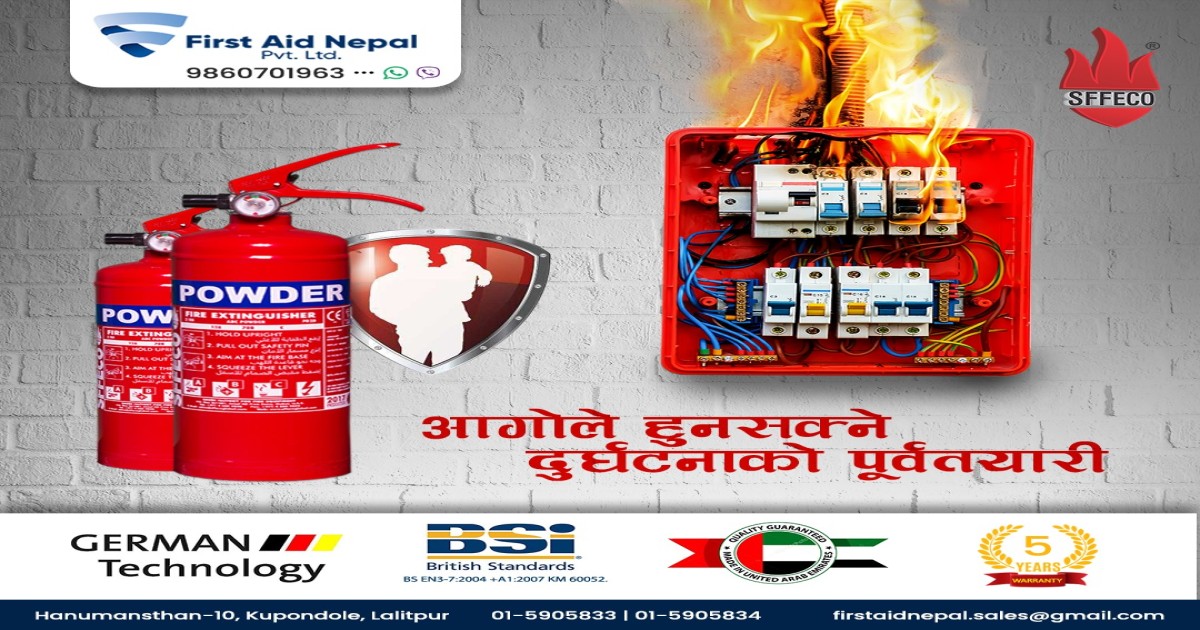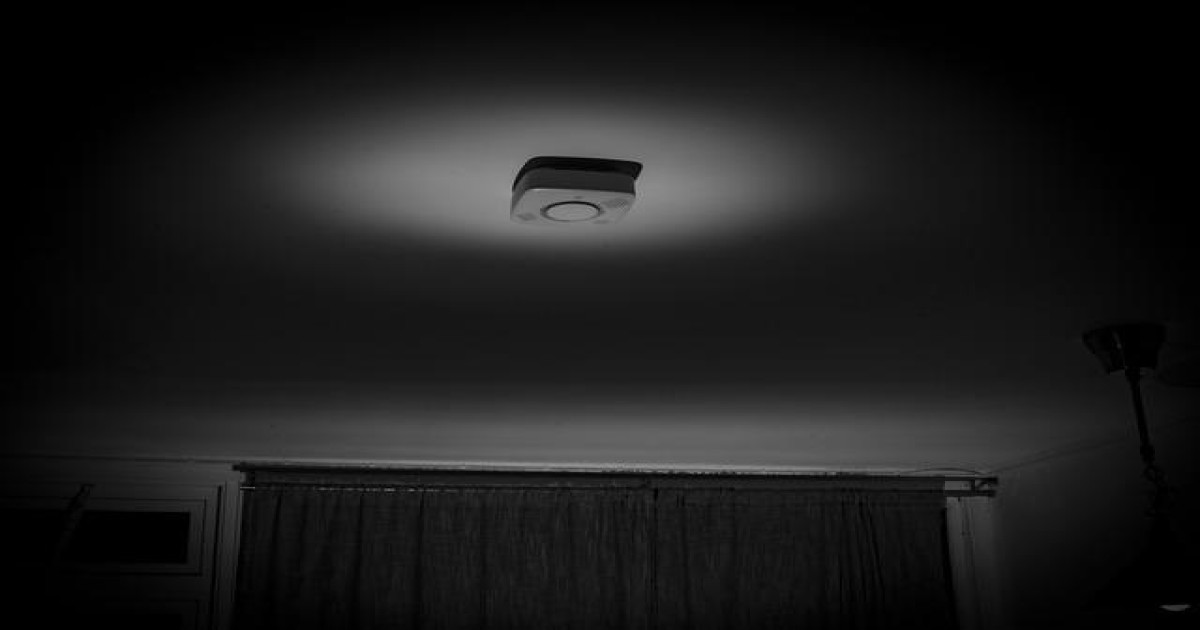
All about Fire Extinguishers in Nepal
May 2nd 2023

Fire is a weird substance. It is easy to create and essential to life, yet it is a threat that we all are scared of. Despite the advancement of human civilization, we are still scared of fire. While we have managed to reduce the fire hazards, we are still far from being immune to them.
This is why we invented an extremely wide array of fire safety equipment like fire extinguishers and alarm systems. Some of these types of equipment can be used to extinguish the fire, while some of these systems are used to warn us of fire and can become quite complicated. Among the complex fire safety equipment, heat and smoke detectors are the most important and useful ones.
In simple words, they are devices that are used to monitor the heat and smoke level of a room or within a range of the device, when the temperature of a room and the smoke level rise beyond a specific level, these detectors emit a signal that can be used to trigger the fire alarm system.
This is the simplest definition of what a heat and smoke detector is. However, the way they function depends largely on their type. Along with this, their sensitivity varies depending on the intention of the manufacturer and additional features they may have.
Besides how they function, their rage plays a vital part in fire safety. As you may have guessed, the range of heat or smoke detectors is determined by their design, model, and manufacturing brand.
The range, sensitivity, and function will heavily influence the cost of the Heat and Smoke detector. But did you know that not all heat and smoke detectors are the same?
Heat and Smoke detectors are a part of fire safety systems, and fire safety systems are an essential aspect of every building. The only issue depends on the building type; the fire safety requirements will vary. So, to cover all bases, there are different heat and smoke detection systems.
Before we begin, we would like to clarify that although we have mentioned heat and smoke detection systems together, they are two separate types of devices. Heat detection systems detect the temperature change, and smoke detection systems detect the change in smoke particles to trigger the alarm.
These detectors are separated into types based on their detection mechanisms.
The working mechanisms of smoke detectors are quite complicated. These devices use high-tech particle detectors that are fine-tuned to constantly monitor the level of smoke in the room. When the amount of smoke suddenly rises, the detector reacts and triggers the signal for the alarm. That said, there are two primary types of smoke detectors, each with its own advantages and disadvantages.
In this type of smoke detector, a small amount of radio active material is placed between two electrically charged plates. This ionizes the air between the plates and lets the current flow between the plates. When smoke particles block the current flow, a signal is sent to trigger the alarm. Depending on the radioactive material and the flow of electricity, the device's sensitivity can be customized.
As you may have guessed from this, the working mechanism of this device is complicated. The good news is that despite the complications, it is a generally reliable device.
This type of smoke detector is mostly suitable for Flaming fires since the heat wave from the fire can also disrupt the flow of electric charge, which triggers the alarm.
Photoelectric smoke detectors are similar to motion detectors in some aspects. They aim a light source into a sensing chamber at a certain angle away from the sensor. The light gets reflected when the smoke enters the chamber, which triggers the alarm. The working mechanism is essentially the same as a short-range motion detector. The only difference is that the motion detector detects movement, while this type of smoke detector detects the presence of small smoke particles.
Photoelectric smoke detectors/smoke alarm work best for smoldering fires where a large amount of smoke is produced.
As the name suggests, this type of smoke alarm combines the technology of both ionization smoke detectors and photoelectric smoke detectors. Combining the best of both worlds, it can warn you of both flaming fires and smoldering fires. However, since you do need to fit two complicated systems in a device, you will need to compromise on the level of sensitivity.
This should not be much of an issue since the two systems work together.
Unlike Smoke detectors, heat detectors are simpler. In essence, heat detectors are simply thermometers hooked with a trigger system. As you expect for these types of devices, they respond temperature of an area rather than the smoke particles. As a result, they are extremely preferred in locations where smoke is common, like automobile shops, hardware repair ships, smoking zones of organizations, and so on.
Similar to smoke detectors, there are also different types of heat detectors. They are categorized depending on how they trigger the alarm.
ROR heat detectors are mostly used in locations where the average temperature is generally hot. In this type of heat detector, there are two heat-sensitive thermocouples. Among the pair, one is sensitive to the heat transferred by radiation or convection, whereas the other is sensitive to ambient temperature. When the first thermometer responds swiftly to the heat from radiation or convection, it triggers the fire alarm system.
This is possible because unless there is a fire or external factors that sharply raise the heat, the temperature of both thermocouples remains the same, regardless of the heat transfer method. When a change happens, the one that monitors heat from radiation/ convection reacts faster.
Fixed Temperature heat detectors are the most common types of heat detectors. They only have one device that is embedded with a heat-sensitive liquid. When the temperature of the room where the device is installed reaches a predetermined degree, the liquid reacts and triggers the alarm.
This is a simple and effective device. However, as you can guess, it is inappropriate for locations with high average temperatures since a small heat spike can trigger false alarms.
Regardless, you can still use this type of heat detector.
There is no steadfast rule about installing Heat and smoke detector systems. However, their placement can affect their performance. In order to prevent this from happening, the general consensus for installing heat and smoke detectors is:
Try to place it as centrally as possible
Keep it away from direct lights and fittings
keep them away from locations that produce high heat or smoke during normal operations
Do not keep them too far from the floors
Install them in areas where the airflow is not blocked
Once you keep these in consideration while installing the detectors, their performance should not be affected all that much.
Smoke and fire detectors do not trigger an alarm before a fire; rather, they react to the fire and sound the alarm. While this makes these devices sound somewhat useless, it is the complete opposite. You get a warning as soon as a fire occurs, and it is enough to provide you with precious time to either deal with the fire or escape to a safer place.
Besides, in order to predict a fire from happening, you would need a device that can predict the future. As we mentioned, fire is weird and can happen at any time and location. A fire will be as long as there is a decent balance of heat, fuel, and oxygen. This is not hard to occur naturally, especially since we are heavily dependent on electricity which is extremely hot.
We hope you found this informative and entertaining. And as always, thank you for reading till the end.

Quick and delivery of innovative fire safety and electronic security solutions for better convenience and additional assurance

Delivery and installation of security products before payment for trust and customer satisfaction

24/7 technical support from security experts to solve all your queries, concerns, and curiosities